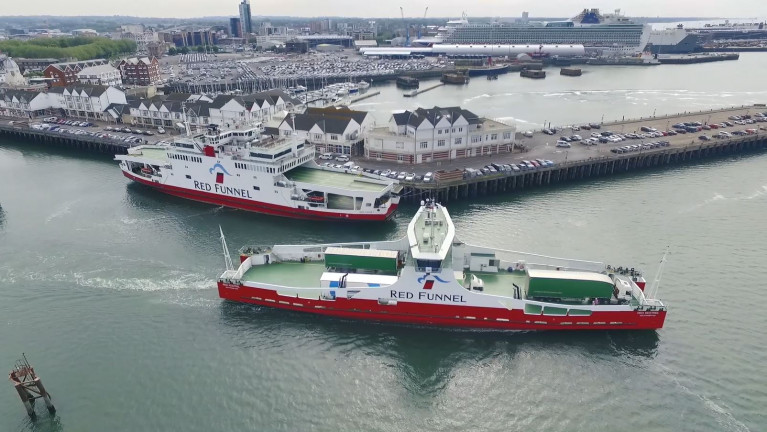In the UK two shipyards, the A&P Group and Cammell Laird along with Isle of Wight ferry operator, Red Funnel have announced a new Apprenticeship Partnership Agreement.
The partnership will result in apprentices from all three companies being offered the chance to train across some of the largest businesses in the maritime sector.
A&P Group and Cammell Laird operate the UK’s largest commercial ship repair facilities. Both businesses have recruited hundreds of apprentices in recent years, offering training in marine engineering, fabrication, electrical, project management, health and safety, finance and procurement.
Red Funnel operates a fleet of Ro-Pax vehicles and Red Jet Hi speed passenger catamarans between Southampton and the Isle of Wight, which carries 3.4 million passengers and 900,000 vehicles each year. Red Funnel’s apprenticeship programme enables young people to earn as they learn, whilst strengthening the team onboard. It is the pathway to a rewarding career within the maritime industry.
Under the A&P and Red Funnel Commercial Partnership Agreement, Red Funnel’s 'Raptor' Class, Red Falcon, Red Eagle and Red Osprey have been visiting A&P Group’s Falmouth facility for dry dockings and repairs for the past five years. In 2019 Cammell Laird, as Afloat reported, the shipyard successfully completed the build of the (ro-ro freight ferry) Red Kestrel. This was the latest edition of the Raptor Class which Afloat adds entered service in the same year.
The new Agreement will further cement A&P, Cammell Laird and Red Funnel’s relationship, as apprentices from all three organisations will now be given the chance to visit each other’s operations, undergo a bespoke training programme, which will equip them with a greater understanding of the life cycle of the Red Funnel fleet.
David McGinley, CEO of Cammell Laird and A&P Group said: “Red Funnel is a long-standing customer of both A&P and Cammell Laird and as such, is a key stakeholder of both A&P and Cammell Laird.
“We are committed to providing our apprentices with the most comprehensive training, to equip them with the skills needed for a bright future. It makes sense that we offer our apprentices, the next generation of workers who will build and maintain the Red Funnel vessels, the chance to see the vessels in day-to-day operation so they can further their understanding of the demands placed on the fleet.”
Fran Collins, Chief Executive Officer, Red Funnel said: “A&P and Cammell Laird engineers play a fundamental role in maintaining and supporting the Raptor Class, boosting efficiency, reducing downtime and enhancing the availability of the fleet for Red Funnel customers.
“This new collaborative Apprenticeship Agreement will offer Red Funnel, A&P and Cammell Laird apprentices an insight in ship repair, ship building and life at sea, which will give them a greater insight into the importance of their training and future career.”
The new programme will go live in September this year.



























































